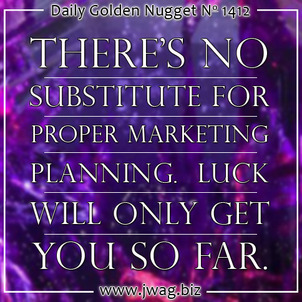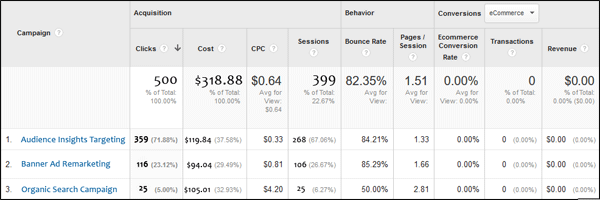
I've previously estimated and explained that the customer cost of acquisition for a retail jeweler is somewhere around $75. You can calculate this number by summing up your advertising expense for a campaign and dividing that by the number of new customers you've acquired during that period.
Since measuring the success of a specific campaign is tough without proper measurement tools in place, you could add up your entire marketing budget for the last 12 months and divide that by the number of new customers you've had.
Measuring the cost of new customer acquisition for an eCommerce website is slightly different. The big online marketing companies, including Facebook ads and Google AdWords, have ways to exactly measure the cost of new customer acquisition. They even have ways to measure the cost of acquisition for specific products or product categories, which comes in handy when it comes time to reevaluate your inventory and request stock balancing.
However, there are very few independent retail jewelers with eCommerce sites, and many stores with e-commerce don't have the technical wizardry to implement the extra programming code for all that measurement.
But what about all the rest of the independent retail jewelers that have online catalogs without the shopping cart? Measuring the customer cost of acquisition is impossible, but you can measure the cost to acquire a real website visitor. Here's how...
Measuring the Cost of a Website Visitor
Before you can measure any visitor costs, you'll need the help of your website programmer or SEO expert to apply the appropriate settings to your Google Analytics account, and to your website so you can track visitors acquired through paid ads. Specifically, they need to set up AdWords conversion tracking on a few pages of your website and they need to associate your Google AdWords account to the correct "property view" within your Google Analytics account.
Speaking of paid ads, I should mention that, with today's basic technology, analyzing the cost of a website visitor can only be calculated using online ads that you pay for. There are some early methods to compare the labor cost of social content to the inevitable customers you gain, but that's way outside the scope of this Nugget. For simplicity, my analysis steps here are only for Google AdWords.
You'll need to allow for time to collect some data once your settings are in place. For websites with low traffic you'll need at least a week's worth of data before any of it makes sense. Once you have that you can navigate to the Acquisitions > AdWords > Campaigns report within Google Analytics as shown here:

You'll then see a report similar to this one:

This report shows 3 AdWords campaigns. The first is using Audience Insight Targeting, the second is Banner Ad Remarketing, and the third is the typical Organic Search Campaign. The sample results shown are for a 7 day period. Please note that, in order to obfuscate the identity of this account, I did change the numbers you see above from the actual screen shot from Google Analytics.
Take note of the 3 eCommerce columns on the right. Those columns will report your online sales when correctly set up. They are useless for non eCommerce sites.
From this screen, we can calculate the cost to acquire a real website visitor. It shows that there were 359 clicks on the Audience Insights ads but the bounce rate was 84.21%. It's time for a little math...
The number of people who bounced:
359 x 0.8421 = 302
The number of people who stayed:
359 - 302 = 57
The cost for those 359 clicks says $119.84, so let's find the actual cost for the visitors who stayed:
$119.84 / 57 = $2.11
That $2.11 represents the money spent to convince someone to browse around your website. That doesn't mean they bought anything, or called you, or even came into your store. That's purely the cost paid for someone to browse your site.
When you work through the calculations for all of them, you will find these results:
Audience Insights Targeting
People who stayed: 57
Cost for each of them: $2.11
Banner Ad Remarketing
People who stayed: 17
Cost for each of them: $5.53
Organic Search Campaign
People who stayed: 13
Cost for each of them: $8.40
As you can see, the cost for the campaign that appears next to organic search results is the most expensive at $8.40. That's a lot of money to pay for a single website visitor, yet a lot of retail jewelers are paying that in hopes that the campaign will yield results.
Sadly, most of the Google AdWords campaigns I've seen are launched long before a website is ready. You'll spend at least $300 on an AdWords campaign each month, and a lot more during the holiday season as the auction costs spike very high. The above example shows only 87 out of 500 people browsed a website, the rest bounced because either the ads were misleading or the landing page didn't satisfy them.
What I'd like you to take away from today's Daily Golden Nugget is that, before you spend money on Google AdWords, you should work through the process of fully testing your website and lowering your bounce rate.
Facebook's advertising has proven to be far less expensive than AdWords, but you should still put your website through a little testing before you use it.
Ultimately, there's no substitute for proper planning. Luck will only get you so far.








